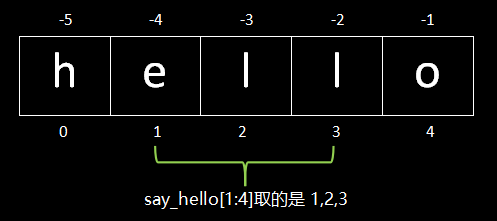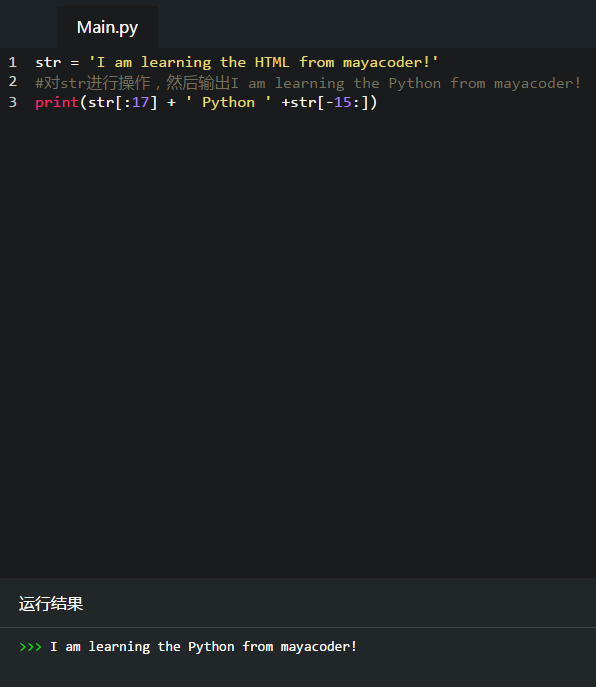
Slice interception is some common string operations in Python. We will introduce it in detail in this article. The function of slice interception is to obtain subcharacters or substrings.
In fact, what we have to do is to use indexes and separate the two indexes with a colon, in the form: variable [head subscript: tail subscript], the number before the colon represents the starting position, and the number after the colon represents the end. Location. This is a left-closed and right-open interval, which means that this string contains the head subscript, but does not contain the tail subscript.
Python data has two indexing methods: the leftmost element starts with 0 and increases in order; the rightmost element index is -1 and decreases in order to the left.
Python’s indexing is very flexible, and you can choose the corresponding indexing method according to the specific situation.
String index
Use the index to get a certain character in the string. Just use the subscript [x] directly. Don’t forget that the index starts from 0!
For example, for a string language="Python", 'P' can be obtained by using language[1] and lanuage[-5].
Split, slice and intercept
Python’s slicing operation often uses split slices, that is, using colons (:) in [] to split strings.
Take say_hell= 'hello' as an example:

As mentioned above, the syntax for using slices is: string variable name [x:y], which represents a period of characters with subscripts from x to y String (excluding y). When x is not written as, like [:y], it means starting from the beginning, equivalent to [0:y]. When y is not written, it means all the way to the end. When neither x nor y is written, it represents the entire string.
Step size slice interception
Step size interception, unlike the previous slice interception operation, it takes the value according to a certain number of "steps".
The syntax is:
Use two colons, such as
Python code
[X::y]
, x means starting from x, y means taking y steps to take a value, and continue until the end. For example, taking the previous str [1::3], that is, starting from the second character, taking a value every 3 bits, the result is eo.
Try!
We have learned to operate and slice strings, so now let’s consolidate the review and do an exercise:
Strings can be concatenated using (+) or (*) Repeat.
Strings can be accessed using index (str[index]).
Strings support slicing operations. Use colon : in [] to split the string and intercept a certain segment of the string.
Strings can be intercepted every few times using step size [x::y] slicing.
Use the knowledge you learned earlier, intercept "I am learning the HTML from mayacoder!" and output "I am learning the Python from mayacoder!". Don't forget that spaces are also characters.
Think about it~~
The answer to the code is this (not the only one):





